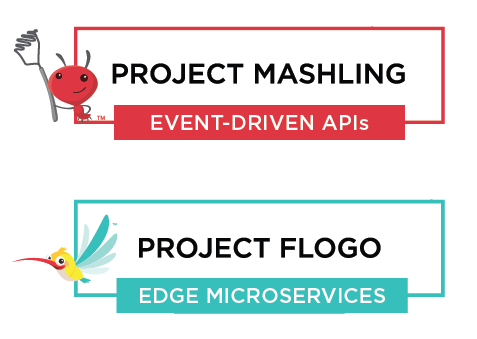TIBCO Sees Road To Disruptive, Dynamic Apps Will Be Paved with Microgateways, Flows, Open Source
TIBCO Software is engineering new microgateway and microservices flow technologies to help companies better design and deliver high-value dynamic apps. The company is also embracing open source to engage innovative developers. IDN speaks with two of TIBCO’s experts on dynamic apps.

CMO

"As apps evolve to be more dynamic and complex, APIs and gateways need also to evolve."

sr product marketing manager

"I think what’s happening is the integration developers are moving toward being app developers – they may just not know it yet."
In 2018, digital transformation appears poised to go through a transformation of its own.
TIBCO Software is engineering new technologies alongside an open source engagement model to help companies prepare for the next wave of digital transformation – where apps get more dynamic, intelligent – but also complex. To learn more IDN spoke with a pair of TIBCO’s top dynamic app experts.
“We are just on the front end of a different style of app design that is still very much API-centric and microservices-centric,” TIBCO’s senior product marketing manager Ed Julson told IDN. “But, it will have a very different exchange pattern than one-to-one conversations that most REST APIs do today.”
As TIBCO sees it, today’s dynamic apps will be capable of intelligent flows. So, to deliver, these new-gen apps need two new capabilities to let developers more readily create dynamic apps that are smarter and event-driven, TIBCO’s CMO Thomas Been added.
“As apps evolve to be more dynamic and complex, APIs and gateways need also to evolve. With today’s more modern apps, you won’t always get an API call through a traditional REST interface. So today’s point-to-point style [of API communication] is no longer good enough,” Been said.
“You’ll also need a great amount of flexibility and governance to handle complexity, and that’s where microservices – alongside microgateways, come in. We also say you need flows, and those flows will bring intelligence,” he added.
In fact, these dual concepts of “flexible, governable microservices” (via microgateways) and flows” will impact the design, integration and runtime of new-gen dynamic apps, Been and Julson both noted.
How TIBCO’s Microgateways, Microservices Flows Projects Can Power Dynamic Apps
So, in that context, Microgateways and Flows are TIBCO’s two latest app-centric technologies:
To deliver an ultralight event-driven microgateway, Project Mashling aims to help speed up development of event-driven microservices. It is designed to help orchestrate multiple microservices to work smartly and efficiently with one another.
“Mashling helps multiple microservices handle and understand events in any number of pre-defined ways, including a response, or forwarding of data to one or more other microservices,” Julson said. Developers can build “event-driven microservices,” Julson added, and even complement service meshes with event-driven patterns. To help developers get started, Mashling even comes with get-started “recipes,” he added.
A related project allows developers to run deep learning frameworks within a microservice flow, Project Flogo brings embedded machine learning capabilities to edge computing. With Project Flogo deployed on edge devices, microservice flows can process data locally and predict imminent events to take action on -- without the transfer of information to and from the cloud.
A main focus of Project Flogo is to help developers build IoT applications (that run locally on edge devices themselves), and as needed quickly integrate them with popular IoT gateways and cloud services (e.g. AWS IoT, Microsoft Azure IoT Hub, etc.) Some examples of IoT integration applications are device activation, remote diagnostics, “event processing” for sensors. Flogo is launched with support for Google's TensorFlow and the TIBCO Statistica analytics and data science platform.
Dynamic apps built with either or both projects can be deployed anywhere (across cloud, edge, and hybrid environments), Been noted.
TIBCO ‘Doubling Down’ on Open Source, Community Engagement
Perhaps just as interesting as the technology, is TIBCO’s decision to release them as open source projects.
“Technologies and ideas are changing so fast software solutions need to be flexible,” Been said. “Also, software adoption is happening from the bottom-up, especially with APIs and microservices. So open source is a natural way to play in that style,” he added. “Yes, we’ll be doubling down with open source in big ways.”
Julson added, “We want broad reach and an open source approach provides that. We also are eager to learn,” he said. “If they find [projects] promising, they may look to build on what we’ve done, offering new ideas and submitting technologies. So, we’re working to build and expand the community [around these projects].” He noted that over the past 10 years, developers have leaned heavily to open source projects.
TIBCO’s formal statement on open source stated in part: “We embrace an open core model, which allows customers to benefit from collaboration with the open source community, as well as accessing new innovations incorporated into our commercial offerings and TIBCO Connected Intelligence Cloud."
TIBCO’s focus on microgateways and flows is a sign of a much bigger trend, as the world of apps and integration converge, the TIBCO execs added.
“Today, customers are moving away from monolithic applications,” Been said. In ‘monolithic apps’ the business logic that ties things together is largely embedded within the app, he explained. In comparison, modern dynamic apps need “to react to various situations in real-time using events, analytics and rules,” Been added. He also told us that microservices and flows will let apps respond to different situations.
How Dynamic Apps Are Transforming ‘Integration Developers’ Into ‘App Developers’ (and Vis-Versa)
Turn Even for those not yet using microgateways or flows, the shift to the dynamic app is already having big implication for IT and developers.
As Julson puts it: “I think what’s happening is the integration developers are moving toward being app developers – they may just not know it yet.” To illustrate the point, Julson described what he sees as the evolution of APIs to microservices.

“Going back to the classic REST API approach, that it is a one-to-one conversation.
“Typically, it will have some app functionality out on the edge. It may be a mobile phone and somebody enters some info and hits a button on the phone. Under the covers, that kicks off an API call. It goes to something at the backend, and pop, you’re done.
Today, apps have much more complexity. So, that traditional point-to-point style just isn’t good enough to handle all an app needs to do. Now within an app, it’s more and more typical that something wants to execute some activity in an app flow. So that flow needs to be more intelligent than it is today.
So, in the end, think about it. . . If you’re building a flow between microservices, well it’s basically integration. You are basically adding business logic into that microservices layer. That lets you use event triggers, event handlers and intelligence to overlay that business logic to choreograph how your microservices work with each other.”
We asked Been and Julson to detail more about what TIBCO is seeing happen under-the-covers in a dynamic app to require an architecture beyond RESTful APIs.
“Dynamic apps need new ways to handle business logic,” Julson said. “Alongside microservices, a microgateway gives a very different exchange pattern for your app or microservice [than point-to-point REST APIs]. It is actively looking for something, and when it finds it, it will push it to your backend, maybe to a different microservice, or do something else with it.”
Beyond the microgateways, using flows can infuse an app with value-added intelligence, via machine learning, algorithm, rules or more, Been said. Further, working together, they can let app developers and operations handle policy and security, he added.
In addition, the use of flows will expand the way developers, IT and business users all think about and use analytics. “Analytics is not just about feeds for reports or dashboards anymore. Today, analytics can use machine learning, streaming data, algorithms and more,” Been said. But to infuse dynamic apps with these advantages (even in real time), analytics will leverage flows to enable them to work in a completely different way, he added.
The search for new technologies that can support dynamic apps is not merely a future to plan for – “it’s happening now,” Been told IDN. “Customers are already asking us for ideas on how APIs can handle many more complex and multi-dimensional traffic and integrations,” he said.
Already on customers’ “ask list” is support for events, machine learning, analytics, abilities to “converse” with other edge devices (without going first to the backend) and easier ways to interface with popular new services such as Alexa, he added.



